On this page
Books about DippersThe books about Dippers on this page are listed in order of publication date with the most recent at the top.
Dippers
Family: Cinclidae
In the UK
White-throated Dipper
(European Dipper)
Cinclus cinclus
Worldwide
Brown Dipper
Cinclus pallasii
American Dipper
Cinclus mexicanus
White-capped Dipper
Cinclus leucocephalus
Rufous-throated Dipper
Cinclus schulzi
|
|
|
|
Wrens, Dippers and ThrashersDavid Brewer
Illustrations: Barry Kent MacKay
Helm Identification Guide
2001
"The first comprehensive guide to these families. Includes 75 wrens, 34 thrashers, and 5 dippers. Includes 32 colour plates. The individual species accounts includes sections on identification, range, habitat, movements, status, geographical variation, voice, behaviour and breeding biology."
|
Buy from amazon.co.uk 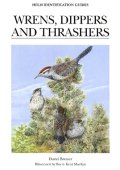
|
|
Wrens, Dippers and ThrashersDavid Brewer
Illustrations: Barry Kent MacKay
Yale University Press
2001
US publication of the above book.
|
Buy from amazon.co.uk 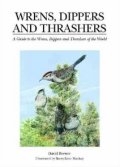
|
|
The DippersStephanie Tyler, Stephen Ormerod
Illustrations: Darren Rees
Poyser
1994
"Dippers are the world's only truly aquatic passerine birds and for the birdwatcher and naturalist the Dipper's remarkable swimming and diving abilities are only added to by the beauty of their preferred but threatened habitat, the fast flowing streams of the wild uplands. Territorial behaviour, breeding biology, diet, movements and population dynamics are all discussed in relation to the Dipper's adaptations to an aquatic lifestyle in environments coming under increasing pressure from man's current changes in land use. The text is supported by numerous figures and photographs, and also by the delightful drawings of Darren Rees."
|
Buy 2010 reprint from amazon.co.uk Buy from amazon.co.uk 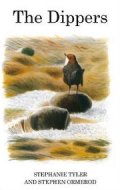
|
|
The DipperStephanie Tyler, Stephen Ormerod
Shire Natural History
1988
A study of the Dipper in Britain. Provides information on adaptation to an aquatic life style, distribution, terratorial behaviour, breeding habits, diet, movements and mortality.
|
Buy from amazon.co.uk 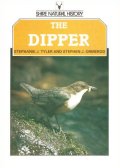
|
|
Population ecology of the dipper (Cinclus mexicanus) in the Front Range of ColoradoFrank E. Price and Carl E. Bock
Studies in Avian Biology No 7
Cooper Ornithological Society
1983
Contents;
- Introduction
- Study Areas
- Methods
- Maps and Measurements
- Banding
- Determination of Sex and Age
- Censusing
- Determination of Territory Boundaries
- Measures of Habitat Quality
- Statistical Analyses
- Annual cycle in the colorado front range
- Population movement
- Seasonal Movement in Altitude
- Postbreeding Movement of Adults
- Dispersal of Juveniles
- Movement in Winter
- Movement Between Drainages
- Homing by Adult Dippers
- Discussion of Movement
- Population density and dispersion
- Seasonal Trends in Population Density
- Environmental Factors Affecting Dispersion
- Social Factors Affecting Dispersion
- Discussion of Density and Dispersion
- Survival and productivity
- Survival and Mortality
- Productivity and Recruitment
- Effect of Stochastic Events on Survival and Productivity
- Discussion of Survival and Productivity
- General discussion and conclusions
- Front Range Dipper Populations
- Population Regulation
- Acknowledgments
- Literature cited
|
Buy from amazon.co.uk 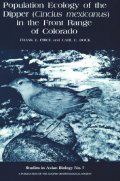
|
|
DippersW.L. Mellersh
Editor: H. E. Dresser
Educational Series No. 7
Society for the Protection of Birds
1890's
A 4 page guide that provides a brief description and information on distribution, numbers, food, characteristics, protection, plus two pages of general remarks.
|
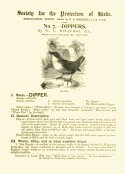 |
|
Remarks on the Palearctic White-breasted Dippers
H.E. Dresser
Ibis: Volume 34, Issue 3, pages 380-387
1892
Opening lines: "Twenty five years have elapsed since Mr. Salvin's excellent article on the genus Ginclus was published in this journal, and eighteen since I wrote the article on Cinclus aquaticus in the 'Birds of Europe' and gave a short review of its allies. It is also now more than ten years since vol. vi. of the British Museum 'Catalogue of Birds,' containing the Cinclida, was issued. During this period, as may well be imagined, much more information on the subject has been published and a much larger material for the discussion of the question is now available. I have lately been examining as large a series of Dippers as I could get together, and the result is that I have to some extent modified the views I held eighteen years ago. It may therefore be of interest to ornithologists if I place on record what further information I have been able to glean on the subject, and report progress up to date."
|
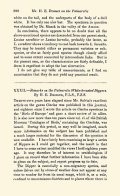 |
|
On the Genus Cinclus
Osbert Salvin
Colour plate (Cinclus ardesiacus): J. Wolf
Ibis: Volume 9, Issue 1, pages 109-122
1867
Opening lines: "When proper attention is given to all the slightly varied forms under which many species present themselves, the difficulty of classifying such forms increases with the attention bestowed upon them, - tbat is, if the relationship which each bears to another be reduced to its proper value and yet brought into systematic arrangement. The definition of species founded on the presumed inability of hybrids to produce offspring is one that is not, and never has been, applied in practice: the fact is assumed from differences of form and colour, and the supposed absence of individuals intermediate in character between two distinct forms. What we really have to consider is, not that two allied species cannot interbreed, but that they do not - sometimes, perhaps, because they are never brought in contact in nature, at others because they will not, even when occupying the same country."
|
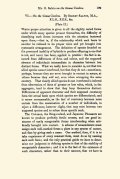
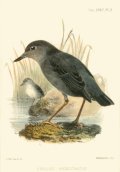 |
|